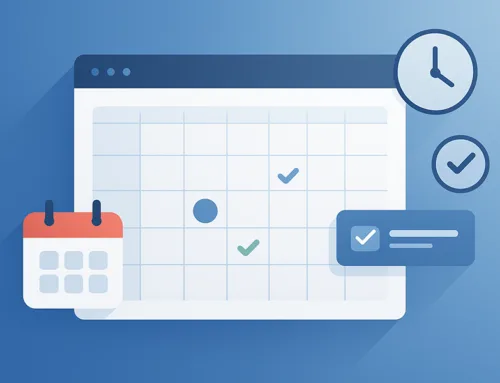Product pages that are designed with good user experience in mind are more likely to boast high conversion rates than poorly designed, cluttered pages.
Potential shoppers need to easily find what they are looking for. They need to navigate the website without any issues and get recommendations for relevant products. Along with all that, you have to prove to them that you are a credible, trustworthy company they can trust their payment information with. When you check all those boxes, you’ll have a winning product page on your hands.
Let’s take a look at seven design principles that form the core anatomy of a high-converting product page.
Social Proof Generates Confidence
88% of customers trust online user reviews as much as they would trust a recommendation from a friend. By populating your own product pages with plenty of customer reviews, you can make your product, your brand, and the entire experience much more relatable.
Don’t just choose the first customer reviews plugin you can find either. Make them an organic part of the page, and use them to enhance your own product descriptions and images.
Let’s take a look at Lush’s Mask of Magnaminty product page.
- They feature the product’s star rating right below its name. This instantly makes the customers feel better about reading more, as they already know most customers have loved it.
- They’ve singled out one review and highlighted it like you normally see testimonials featured. This brief blurb encapsulates the feel and quality of the product, but it sounds more genuine than the brand’s own description, as it was penned by a user.
- They have an entire UGC section where they showcase images from Instagram. Their unique hashtag helps them easily grab the images they need for their website and gives their audience a chance to feel like a part of the large Lush family.
- When you finally reach the customer review section, you can marvel at its user-friendliness, as it features:
– A star rating overview
– The likelihood of the customer recommending the product to a friend
– Two top reviews
– 1500+ other reviews, which you can filter based on age, skin type, skin goals, pros and cons
By emulating these key social proof elements, you can design a high-quality product page. The goal is to build a product page that appeals to your target audience and makes them feel like they are chatting with a group of friendly people.

Trust Badges Address Conversion Obstacles
The potential customers who land on your product pages will come armed with loads of conversion obstacles. Typically, these obstacles include:
- shipping times and rates
- returns and refunds policies
- website security and trustworthiness
- privacy concerns (will you sell their personal data to a third party?)
- whether your products are genuine and fitting for their particular lifestyle
The simplest and most effective way to overcome them is to add trust badges that will directly address these most common fears.
Before you select the badges you want to feature, make sure to carefully consider what might be on the minds of your specific target audience. For instance, if you are a well-established brand, you don’t need to reassure them that your products are of the highest quality, but you may need to address shipping and return policies.
Cotopaxi’s Alpa Travel Pack page, for example, highlights free returns and exchanges, a lifetime warranty and repairs, and the option to trade the product in for a gift card. They pride themselves on their care for the planet and the quality of their products (i.e., you only have to buy them once, and they will last you a lifetime). So, these are the best features to highlight, and they speak directly to the cost of their products.

Kettle and Fire, on the other hand, understand that their audience will want to know if their products comply with certain dietary restrictions or lifestyle they may be following. This is why their Butternut Squash Soup page underlines that the products are non-GMO, gluten-, dairy- and glyphosate-free. Had they chosen to put the free shipping on larger quantities to the forefront, chances are their pages would not be as effective.

Urgency and FOMO Trigger Impulse Purchases
Customers are often incentivized to make a purchase when they see that a certain item is about to run out of stock or when they notice a lot of other customers are showing interest in the same item. A couple of effective design elements can put these facts to the forefront of your product pages and help customers make a purchasing decision sooner.
This works especially well for seasonal offers, but you can apply the same principle to evergreen products. You will still shorten the time a customer spends contemplating a conversion.
John Lewis has a great feature that capitalizes on urgency and tells you how many items are still left in their online store. In other words: if you want this item, you better hop to it, because someone else might snag it right under your nose.
This tactic is so similar to brick-and-mortar shopping experiences. When there is only one item left in your size on the rack, you are much more likely to buy it, afraid you might miss out.
Their Emma Bridgewater Flowers product page illustrates this technique.

Etsy plays with FOMO on their product pages. For example, this Custom Pet Blanket appears to be super popular, as there are over 20 people who currently have it in their carts.
They’ve also added a neat “sale ends in 2 hours” trigger too, pairing the fear of missing out with the urgency posed by the limited-time offer.

CTAs Must Be Visible and Engaging
CTAs are arguably one of the more important elements on a product page, as they are the direct path to conversion. If the rest of the page does a great job of overcoming conversion obstacles and showcasing the value of a product, even a subpar CTA can work. But why skip optimizing this element when creating great ones is so simple?
Here are the design principles for CTAs you should keep in mind:
- Start by choosing powerful copy. Use action words and make the CTA as personal as you can. While “add to cart” works just fine, if you can add a twist to it, you’ll see higher conversion rates.
- Try “give it to me!” or “I want it,” if it’s in line with your audience, of course.
- Make the text large and clearly visible, and use a colour that will contrast the button itself. White and black are the usual choices, depending on the background colour.
- Test out different button shapes. Slightly rounded edges usually work best on CTA buttons, but make sure to put this theory to the test yourself.
- Test out different button sizes. You want the CTA text to be slightly larger than the other text on the page, and you want the button to stand out very clearly. Again, test out different versions to see which gets the most clicks.
- Choose a contrasting colour. A colour that is directly opposite in the colour wheel from the main colour of the page is a good choice for a CTA button.
The key to creating a good CTA is testing. You may land on a winning combination of colour and shape on the first go, but you may need to play around with various combinations to get it right.
Mobile-Specific Design Is Critical
A third of US internet users shop on their phones every week. Mobile and desktop use are neck and neck, so chances are a very large portion of your audience visits your website from a mobile device at least once, even if they don’t end up converting from it.
You need to put the needs of your mobile users front and centre (and let’s not forget about mobile-first indexing either). Design a mobile version of your product pages that specifically caters to the needs of a smaller screen. Being merely responsive in your design is no longer enough.
Consider these points when creating a mobile-specific design:
- Establish a clear information hierarchy and put the most important elements at the top of the page.
- Eliminate all pop-ups.
- Place clickable elements within easy reach of a user’s thumb.
- Make your CTA buttons larger and impossible to miss or mis-click.
- Consider sticky headers carefully and only use them if necessary.
- Make breadcrumbs bigger, and consider making them sticky.
- Reduce chunks of text but make sure all text is easily readable.
Shoppers Want to Know Exactly What the Product Looks Like
Before they make a purchasing decision, customers will want to know what the product looks like. The more details you’re able to provide, the better. In design terms, this means you need to populate your product pages with high-quality images and pair them well with the product descriptions.
Ideally, you want to show a product from every possible angle. Look at H&M’s Satin Halterneck Dress product page. The fashion brand shoots their items from various angles, often paired with other items to provide a bit of inspiration. Additionally, they provide a close-up of the fabric to help the viewer get a clear idea of what to expect.

What they also do well is show all the different variants of a product, i.e., other available colours and patterns. It’s a great way to direct traffic.
You also need to make sure there’s a very high-res product image that can be zoomed in to show even the tiniest detail. This bulk citric acid page by Vivion does a good job. The clearer shoppers are about the product they are going to receive, the higher the chances they will buy it.

Don’t forget that, in line with what we’ve just noted about mobile-first design, you need to assign each image a specific width and height and ensure they are loaded in next-gen formats. If the image takes ages to load and slows the page down, it will ruin the good UX of the zoomability.
BONUS TIPS: Your Product Category Pages Contribute to Conversions
Don’t forget that there is another product-specific page your customers are very likely to check out while browsing: the product category page.
If customers land on your homepage, they are more likely to start browsing categories than specific products. This is where they will choose which items they want to take a closer look at.
It’s important to give these pages the same level of attention you give to each individual product page, as a poor experience here can lose you a lot of conversions.
You are looking to apply all the product page design best practices we’ve mentioned: high-quality images, ease of navigation, and straightforward organization.
If you also include the ratings of each product on the category page, you will be leveraging all that social proof power yet again. Look at Anytime Baseball Supply’s 9 Hole Pitching Nets category page. It shows the star ratings and the number of reviews, building added credibility and prompting a click through to the product’s own page.
Without this element, someone who may not be adept at choosing the type of net they need could be dissuaded from browsing further, as they need to do all the research and comparison themselves.
You can also enable shopping from the category page. If customers are able to add the product they like to their cart right away, they can check out faster and save time. It’s a great way to boost user experience.
Shop Solar Kits does this with their Complete Solar Power Systems category pages. If you already know which solar kit you want, you can just pop it into your cart immediately. If not, you can check out the product details before making a decision.
Wrapping Up
Consider these product page design principles to upgrade the way you currently display your items. You may need to make significant changes, or it might be a matter of subtle tweaks and considerations. Remember to always test your new pages out before fully committing to them. That way, you can be sure to choose the solution that works best for your specific target audience.





